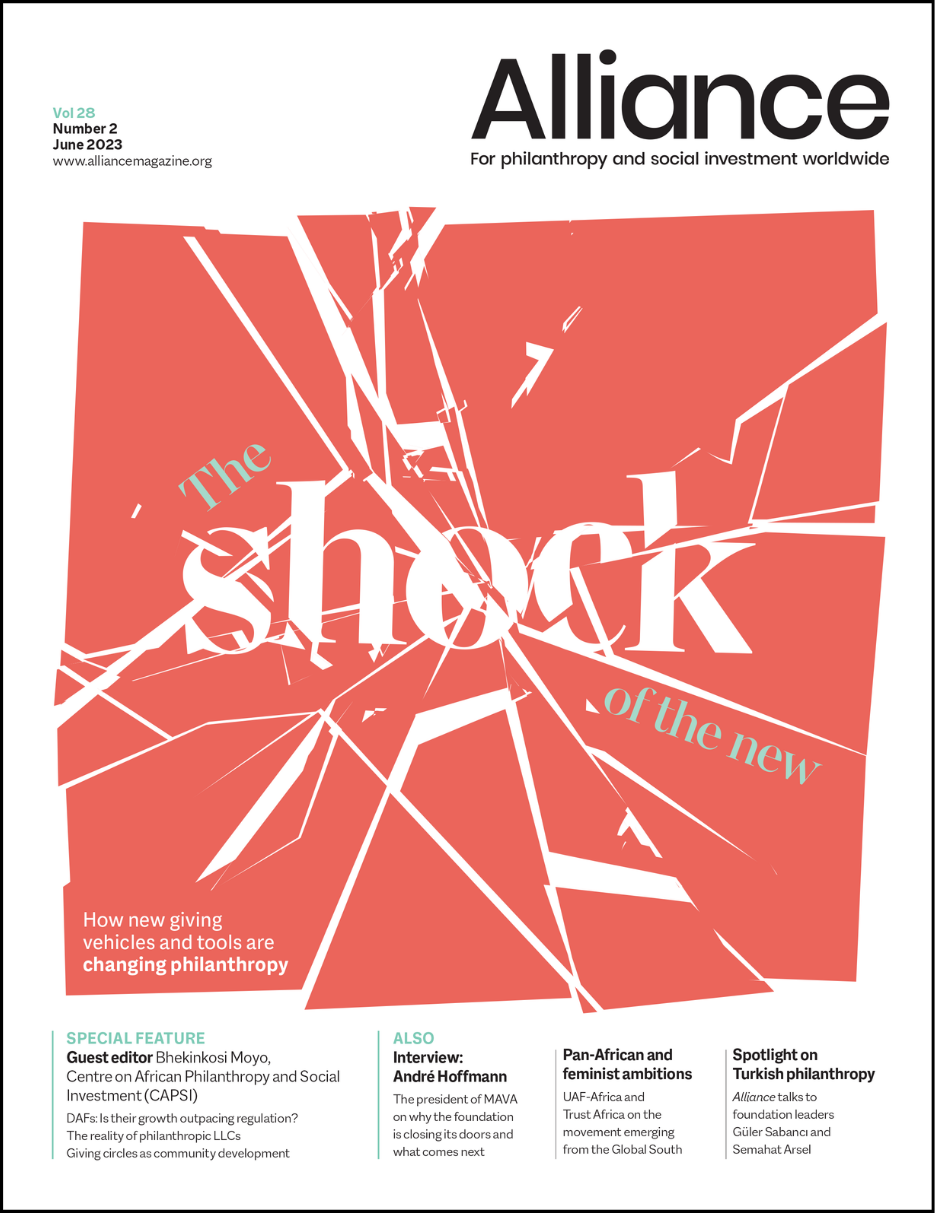The traditional foundation model – which assumes different forms and styles around the world – still lies at the heart of institutional philanthropy. But in recent years, the old model of charitable foundations has been supplemented, and some fear supplanted, by an explosive growth of donor advised funds (DAFs) and giving through non-charitable structures like limited liability companies.
At the same time, technology has opened online channels for people to give and receive in ways unimaginable a generation ago. The transformation of both funding and fundraising through crowdfunding and personalised giving platforms is viewed by proponents of new giving vehicles and tools as a move towards the democratisation of philanthropy.
Certainly, there is evidence to support this view. Colleagues in war-torn Ukraine tell us that patriotic fundraising drives – facilitated by crowdfunding platforms, banks and other giving mechanisms – mobilise support for everything from humanitarian needs to military vehicles and drones. While such drives are not new, the means and the form they take, and the technologies they use, are changing.
What have been the effects on institutional philanthropy? Are much-criticised donor-grantee divides baked into foundation practice being upended by these developments? If so, many would see that as a welcome challenge to institutional philanthropy.
In our special feature on the topic, we explore different forms of giving and discuss their advantages, drawbacks and criticisms. We also look at the possibilities for shifting and devolving power. And we look at the democratising implications of online giving and crowdfunding. In light of all this, we ask whether ‘traditional foundations’ are modifying their practices and structures.
While change is afoot, the effects will vary. As our features editor Andrew Milner notes elsewhere in this issue, what is new in one place may be far less so in another.
And at risk of sounding conservative, it’s also worth asking what might be lost as well as gained if foundations eventually lose their primacy to some of these new forms. While institutional philanthropy has its shortcomings, many of which we frequently document on these pages, charitable foundations also have enduring qualities – often set up for the longer term, benefiting from developed regulatory structures in many countries, and most of all, requirements for a greater degree of transparency and disclosure than DAFs.
For all the benefits of DAFs – their ease, their accessibility, their efficiency, their ability to make everyone a donor – there are also many questions to be asked. Like foundations, they deserve scrutiny too.
We’ve argued on these pages that there is a massive reforming agenda for foundations to embrace in order to be fit for the challenges of the times. On issues like gender and racial justice, climate change and the issue of introducing or increasing mandatory payouts, there is no shortage of areas where foundations can improve. But we would urge caution and question those reforming voices who see the explosion of new giving vehicles as heralding the end of foundations. Not only does that not reflect the current reality where in many regions the number of foundations is growing, it may be that we should be careful what we wish for.
For all the benefits of DAFs – their ease, their accessibility, their efficiency, their ability to make everyone a donor – there are also many questions to be asked. Like foundations, they deserve scrutiny too. Why for example should individual DAFs – which generate upfront tax benefits to donors – not be subjected to a mandatory payout or be time-limited? In the US, that conversation is only just beginning. Elsewhere, it has barely started.
Meanwhile, endowments – another giving vehicle of sorts – are enjoying something of a revival. On these pages, we report on exciting plans for a new endowment to support pan-African and feminist philanthropy. That follows a remarkable conference in Naivasha, Kenya, in February which set out a refreshing vision for feminist philanthropy and solidarity in Africa and beyond.
We also hear from three leading philanthropists in Europe – family members from the Koç and Sabanci Foundations and also André Hoffmann, the Roche pharma heir who has decided to close the doors of the MAVA Foundation with some parting observations for institutional philanthropy along the way.
Wherever you stand, we invite you to sit down and enjoy the new issue of Alliance magazine!
Charles Keidan is Executive Editor of Alliance magazine.






Comments (0)